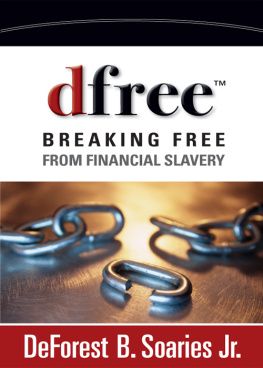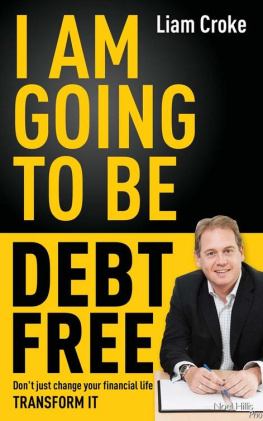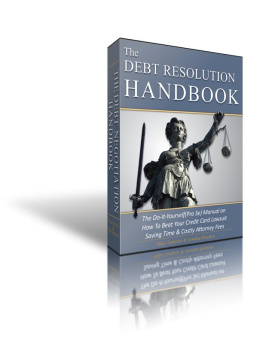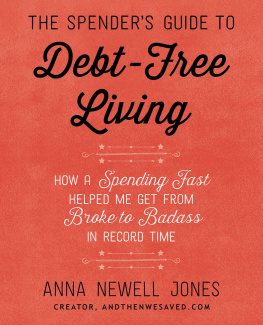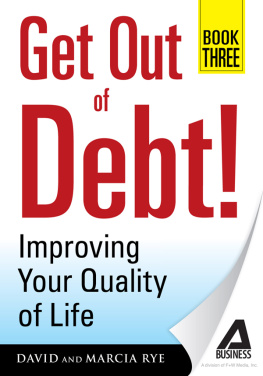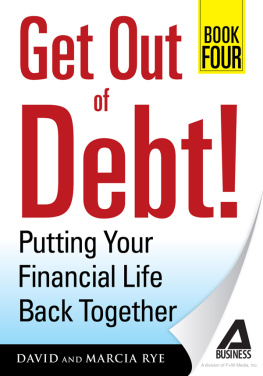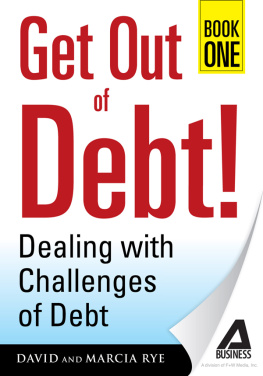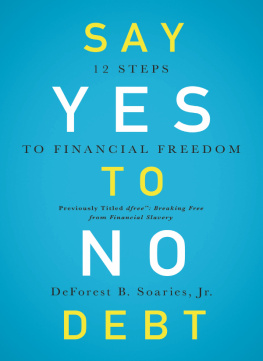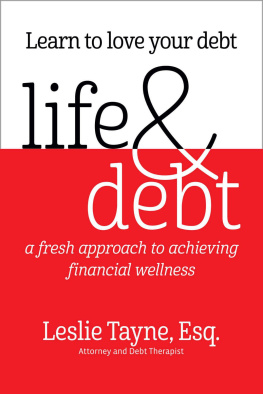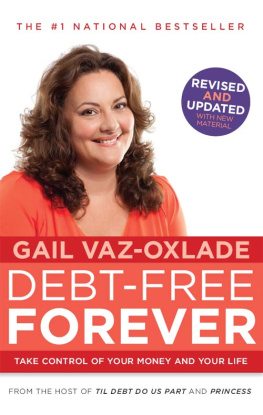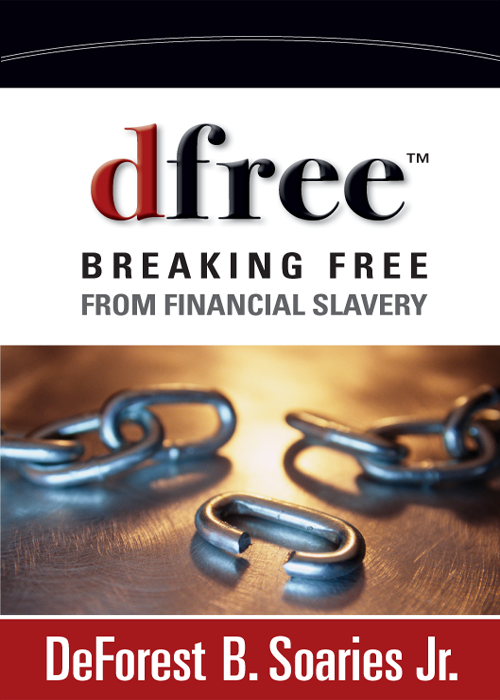Introduction
Consumer Debt The New Slavery
People in debt are not fully free human beings.
They are enslaved to the money they owe.
Bill Cosby and Alvin Poussaint
I MAGINE STROLLING THROUGH THE GROCERY STORE AND SUD denly noticing that most of the other shoppers are wearing chains around their wrists and ankles. The new mother with her little girl sitting in the front of the cart. The older gentleman contemplating brands of breakfast cereal. The college student reaching for the frozen pizza. The career woman grabbing dinner for her family on the way home from work. All of them seemingly oblivious to the weighty encumbrance of heavy iron chains securing their arms and legs.
Then you begin to notice that most people are shackled wherever you go. Standing in line for tickets at the movie theater, or walking down the hall at work, or welcoming people into the foyer at church, you see the same powerful chains binding the limbs of those around you. Everyone smiles and nods How are you today? Oh, Im fine, and you? working hard to ignore the debilitating burden that so limits their movements. Many seem to pretend that the chains arent even there, while others adjust them as if they were new accessories from the jewelry store. You wonder if youre dreaming or watching a new science fiction program on TV, when you look down and see the same enormous iron chains gripping your own hands and feet.
Such a disturbing spectacle would be hard to ignore, particularly if no one else seemed to notice or to be troubled by it. The passive acceptance of such enslavement would seem particularly surprising in a country that upholds human freedom as a cornerstone value freedom of speech, freedom of religion, and freedom to vote for whomever we choose. However, such enslavement does bind many of us and inhibits our freedom every day. While invisible to the naked eye, heavy chains of consumer debt are squeezing life out of millions of Americans right now.
Perhaps the most stunning fact is that our twenty-first-century slavery is self-imposed and self-perpetuated. Hundreds of years ago, men and women were ambushed and violently captured against their will, literally dragged thousands of miles away from their homeland and forced into hard labor that often cost them their lives. Today, men and women are ambushed by their own poor choices, impulse purchases, and attempts to keep up with a miragelike cultural standard of consumer consumption. They remain shackled by high interest rates and low minimum payments. Men and women today resign themselves to a desperate, hopeless future in which they can never dig out of their financial pit.
Plastic Shackles
Consumer debt grips millions of people with plastic shackles every bit as powerful as the iron chains that once bound slaves. A bold, even audacious, statement, I know, particularly considering the historical atrocities of slavery in our country. As a descendant of some of those slaves, I do not make this analogy without recognizing the gravity of its implications. I do not make such a comparison lightly or for the sheer effect of its cultural shock value, although the ongoing enslavement of millions of Americans should shock and concern all of us. While many of my fellow African Americans may be particularly upset or offended by my literal comparison, I find that enslavement is the only adequate word to express the dire, life-draining, debilitating condition in which we find ourselves today.
When I shared my view for a recent CNN documentary on debt among African Americans, Soledad OBrien, my interviewer, did a double take and asked if I was sure of my assertion. Without hesitation, I confirmed my statement with a resounding yes. I repeated the message that has become my mantra over the last few years: Consumer debt enslaves millions of people in our country with debilitating chains that only seem to grow tighter each month as bills increase and income decreases. Weve shackled ourselves with fear, stress, and shame by spending far more than were taking in or saving. However, the time has come to emancipate ourselves. Thats what this book and dfree living is all about: your financial freedom.
You may be wondering how I know what Im talking about. Granted, Im not an expert accountant or financial guru, but I know firsthand the harsh realities of economic imprisonment. As the pastor of a large suburban church in New Jersey, Ive shared in the many struggles of my members unemployment, unpaid bills, depleted retirement accounts, and foreclosed mortgages. As a government official and community development leader, Ive similarly experienced the impact of layoffs, shrinking budgets, and corporate bankruptcy. And as a middle-class American who was once seduced by easy credit and then overwhelmed by staggering balances, Ive waged my own personal battle for fiscal freedom.
Foremost, Ive learned that overwhelming debt exists and continues to grow in every sector of American life across every demographic gender, race, education level, and pay scale. No one is immune, not bankers, teachers, executives, accountants, artists, or entrepreneurs. Not only is our nation drowning in debt but many American citizens have also become addicted to a lifestyle that perpetuates the use of credit cards, high-interest loans, and borrowing against future earnings. This problem had escalated to epidemic proportions long before the recession of 2008 officially identified our crisis. The Center for American Progress reported in July 2006 that 56 percent of blacks, 42 percent of Hispanics, and 46 percent of whites considered their debt levels a serious problem.
So even before our most recent economic downturn, we were aware of the problem and yet continued to ignore it. Consider these data points on credit card debt as reported by Money-Zine.com:
- The size of the total consumer debt in the U.S. grew nearly five times in size from 1980 ($355 billion) to 2001 ($1.7 trillion). Consumer debt in 2008 skyrocketed to $2.6 trillion.
- The average household in 2008 carried nearly $8,700 in credit card debt.
- According to the U.S. Census Bureau, there were 164 million credit card holders in the United States in 2005, with that number projected to grow to 176 million within five years.
- According to the Federal Reserve, in 2001, 76.2 percent of U.S. families surveyed had credit cards, and 55 percent of those families carried a balance. Three years later, in 2004, approximately 74.9 percent had credit cards, and 58 percent of them carried a balance.
Despite the recognition of a recession in October 2008, the national hole of debt only grew deeper. The National Foundation for Credit Counseling reported in its 2009 Consumer Financial Literacy Survey that approximately 26 percent more than 58 million adults acknowledged that they werent paying all their bills on time. The report goes on to state, In the last 12 months, 15 percent of adults, or nearly 34 million people, have been late making a credit card payment and 8 percent (18 million people) have missed a payment entirely. More than 13 million adults (6 percent) report that their household carries credit card debt of $10,000 or more from month to month, and the same number have debts in collection, are seriously considering filing for bankruptcy, or have already done so within the past three years.

